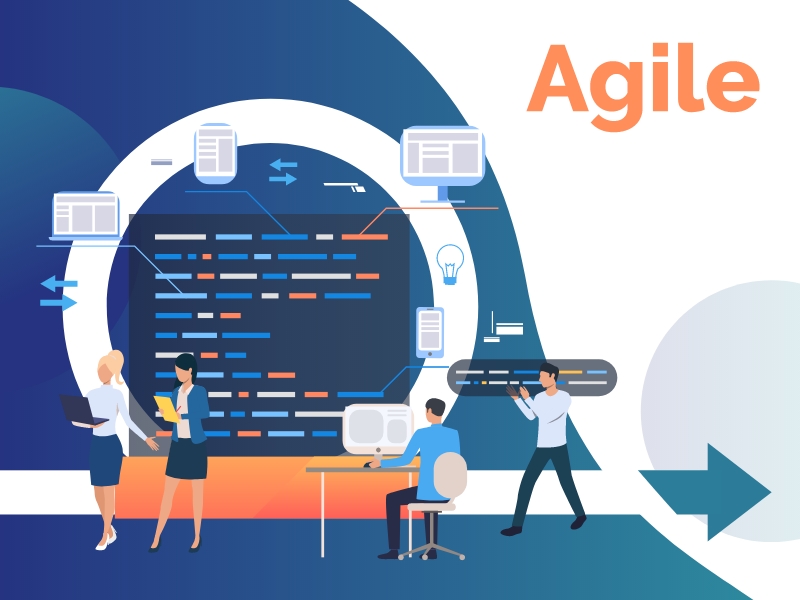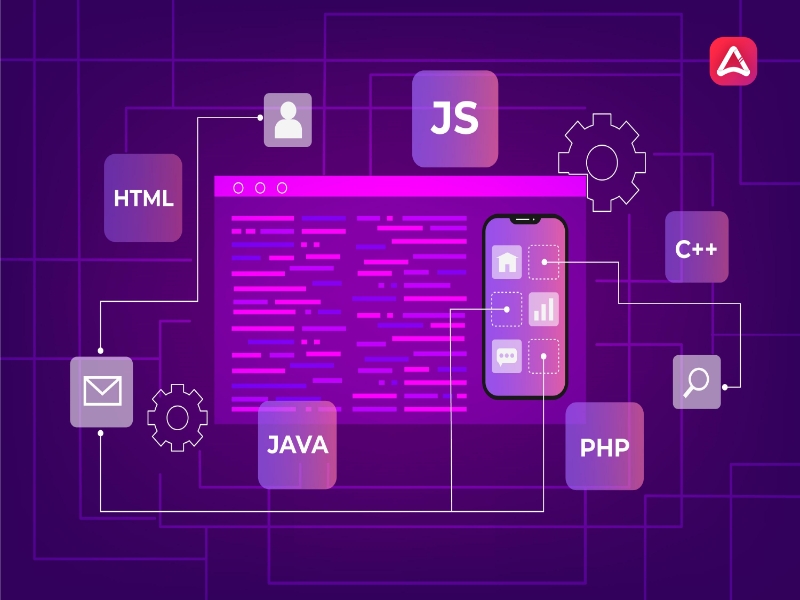Developing software means building it simply by describing it. This is a very good reason to consider software development activity as engineering. On a more general level, the relationship between software and its environment is clear since the software is introduced into the world to cause certain effects on it.
Those parts of the world that will affect the software and that will be affected by it will be the Application Domain. It is there where users or customers will observe if software development has served its purpose.
One of the biggest shortcomings in software construction practice is the little attention paid to the discussion of the problem. In general, developers focus on the solution, leaving the problem unexplored. The problem to be solved must be deduced from its solution.
This solution-oriented approach can work in fields where all problems are well known, classified and investigated, where innovation is seen in the detection of new solutions to old problems.
But software development is not a field with such features. The versatility of computers and their rapid evolution means that there is a repertoire of constantly changing problems and whose software solution is of great importance.
Phases of Software Development Process
Extracting the requirements of a software product is the first stage to create it. The result of the requirements analysis with the client is reflected in the ERS document, System Requirements Specification, whose structure can be defined by several standards, such as CMM-I. The capture, analysis, and specification of requirements (including proof of them) is a crucial part; the achievement of the final objectives depends largely on this stage. Models and various work processes have been devised for these purposes. Although not yet formalized, there is already talk of Requirements Engineering.
Design and Architecture
It refers to determining how it will work in general without going into details. The use cases are defined to cover the functions that the system will perform, and the entities defined in the requirements analysis are transformed into design classes, obtaining a model close to object-oriented programming.
Programming
Reducing a design to code may be the most obvious part of software engineering work, but it is not necessarily the longest portion. The complexity and duration of this stage is closely linked to the programming language or languages used.
Tests
It consists of verifying that the software correctly performs the tasks indicated in the specification. A test technique is to test each module of the software separately, and then test it in an integral way, in order to reach the objective. It is considered a good practice that the tests be carried out by someone other than the developer who programmed it, ideally an area of tests; notwithstanding the foregoing, the programmer must make his tests.
In general there are two great ways to organize a test area, the first is that it is composed of inexperienced personnel and that the issue of tests is unknown, so it is evaluated that the documentation] delivered is of quality, that the processes described are so Clear that anyone can understand them and the software does things as described. The second approach is to have a test area made up of experienced programmers, people who know without further indications under what conditions an application may fail and who can pay attention to details that inexperienced person would not consider.
Documentation
Everything concerning the documentation of the software development itself and the project management, through modeling (UML), diagrams, tests, user manuals, technical manuals, etc; all with the purpose of possible corrections, usability, future maintenance and extensions to the system.
Maintenance
This may take longer even than the initial development of the software. A small part of this job is to fix errors or bugs. The main part is to extend the system to do new things. Similarly, about 2/3 of all civil engineering, architecture, and construction work is maintenance.
It can be said that with the continuous improvement it guarantees the quality of the product since being applied day by day is the best decision that any company can have because in this way it avoids major problems in the development or development of the products. This is essential for all companies as they become competitive, with greater productivity and efficiency. Do not forget that the improvement occurs because the customer is the king and you have to meet each and every one of his needs always guaranteeing quality.
Importance
Currently the transition that we are living towards a knowledge society has profoundly changed the relationships between people, companies, and governments: companies use the network to communicate with customers, they also use knowledge management tools to make them more efficient, governments improve its presence on the Internet and services to citizens through the network, users use the tools for their relationships, etc. It goes unstoppably towards a highly interconnected society where the fundamental axis is information.
Software is the increasingly large intermediary between information and human intelligence. In the same way that worries to be able to access the information, if there is censorship, it is a matter of concern of who controls this intermediary and the guarantees of its transparency and reliability.
In principle, the software is a computer program or set of them that has a specific purpose, is to process the texts we use, the recording controller of our favorite spaces or the applications that allow us to operate a mobile phone.
It consists of a set of instructions that the user performs to execute a specific function. Normally programmers write in a language in which everyone can understand and then the only one that machines understand is translated into binary language. The set of commands in the language that all work are called source code.
If the code is not accessed, you can only use the program, you cannot see how it is done or enter comments. A widely used example is that of the recipe, in which the source code is the instructions for making a dish. Without the recipe, you could only taste the dish, but it is not known if something is added to it that goes against some of these ingredients since its composition and proportion are unknown. In this sense, the source code plays a fundamental role in the way software should be understood.
Several examples could be given to understand this importance. At the end of the 90s, it was possible to see worldwide the concern on the part of companies and governments about the consequences that the so-called 2000 effect could have. The famous computer error was due to the fact that many programs stored the part of the date corresponding to the year using only two digits, in such a way that after the year 99 ( 1999 ) we could go to year 00 (the year 2000 or year 1900 ?) Causing all kinds of errors in the calculation of time period.
The computers of the electricity companies, nuclear power plants, aviation control system, banks and in general, all the software for daily use, had to be reviewed. Finally, some applications were corrected, others were already functioning correctly and there was no need to regret any catastrophe, but there were thousands of apocalyptic predictions about the consequences that this error could be obtained, so it could have been if it had not been repaired in time.
That is why software has a very important role in society on how to guarantee transparent methods in its different phases of production and exploitation.
Check Also -: Top Software Development Companies in Canada
Software Development Process Models
There is no consensus on what is the best model of the software process. Different development teams can use different software process models to produce the same type of software system. However, some models are more appropriate to produce certain types of systems, so that if a suitable model is not used the resulting software system may be of lower quality.
The distribution of costs between the different phases of the development process is difficult to determine given the different existing process models. However, depending on the model adopted, at least 60% of the total cost is used in the system evolution activity. The estimate of this percentage is pessimistic since the growth rate of new software products is much higher than the rate of software products that are deprecated (do not have to be maintained), so the number of maintenance operations that are Perform continues to increase. The software design process should, therefore, take into account the subsequent evolution of the system.
The desirable characteristics of a software development process are:
- Clarity: The development process is clear when it is easily understood.
- Visibility: A development process is visible when its activities produce clear externally identifiable results.
- Ease of support: It requires having a CASE (Computer-Aided Software Engineering) tools that support all or some of the activities of the development process.
- Reliability: A development process is reliable when it can detect possible errors.
- Ease of maintenance: Requires capacity to incorporate new requirements or modify some or some of the existing ones.
- Speed: A software process is fast when you can obtain, from the specification, an implementation of the system in a short time.
Characteristics of a modern software development
The development of modern software is distinguished by two characteristics: object-oriented programming and the separation of the different logical stages in terms of presentation, application and data access. Other quality parameters, such as modularization, version creation, and source code documentation, belong to our standard as well as focused project management
Consequences of not completing the formalization
Each developer could indeed manage well within his field of activities also without this formalization, but at the time of composing the system later, serious compatibility problems would result. The consequences would be unexpected delays in finishing the system, poor maintainability, as well as limited possibilities for expansion.
Software ergonomics and usability design
“Usability design” is the current end of a development that drew computer attention as “software ergonomics” in the 1980s. While both terms are difficult for the profane to understand, the term of “practical utility” is much more useful, since it allows to determine concrete and testable properties.
Dedicated to users from the beginning
The usability design must ensure that the ease of use of the software is considered in the development process from the beginning and retained throughout the life cycle.
These are some important aspects of dealing with software development. Yes, every market has its unique demands and expert developers implement technological solution keeping in mind the trends, requirements, and efficiency. Here Appstudio excels as the developers take each project according to its merit and perform their level best to provide solutions which are not only innovative but also best-in-class.






